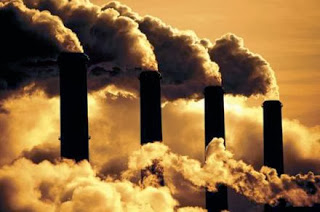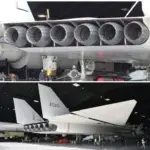 |
| Environmental Problems |
Environmental Problems In Rawalpindi And Islamabad
Islamabad the Capital of Pakistan, is the land of green lush grass covered grounds and sky kissing high mountains of Margalla, Wide tree-lined streets, large houses, elegant public buildings and well organized bazaars, Rawalpindi the joined twin city of Islamabad is showing the face of old traditions, narrow streets, old architectural buildings. The two cities though very close but still have many features in different, like landscaping, local transport, quality of town planning, etc.
Like all other big cities these two cities house a huge population, beside many other reasons one reason being the community of small cities shifting there to get settle and earn a handsome income because of comparatively nice amount of employment opportunities. This increment of population by no means has an end, and not only is growing in number but speed also. This is how the main cause of “Environmental problems” in these cities is cited i.e. increment in population meaning increment in solid waste, increment in waste water, increment in noise pollution etc.
The time you left your house you find yourself in a dustbin, with number of shopping bags floating and flying in air, flies and mosquitoes disturbing you, waste water percolating the natural ground water polluting it and increasing the number of water born diseases in the inhabitants.
Like all other developing cities, these twin cities find difficulty in balancing between economic development and environmental protection. In fighting with the neighboring growing cities of the country these cities house no. of small and large scale factories, production houses, raw material sources and much more. With the increase in population the damage and severity of environmental issues increases.
Cutting of Forests
Reason for cutting of forest is many in number, like need of a place to construct building or construction of a pavement or highway like motorways, usage of wood as fuel, usage of wood as a construction material in mountainous areas etc. these all reasons have its validity in the locality of Rawalpindi and Islamabad. The importance of trees have no second opinion, we know their importance as far as the air quality and oxygen quantity is concerned besides other utilization like as a food source etc. In the twin cities, this problem though very similar but has a different to some extent, like Islamabad is a much green land then Rawalpindi where our eyes find greenery on few occasions distant a part. The main reason being the cutting of forest on the Hills of Margala. Increase of population means increase of construction which in turn means increase in cutting of trees. But Government has jumped in this situation to rescue the environmental quality of the region and has thus made a policy in 1992, in which the cutting of trees and forest was made illegal and was banned. But that policy doesn’t seem to have a success.
The local community because is more educated comparative to other cities of Pakistan, knows the importance of trees and occasionally we see seminars and plantation schemes motivating the inhabitants and let them know the importance of trees.
Thus in this regard the government must develop a significant policy in this regard, a strict legislation is required which will ensure how the community finds its responsibility in saving their environment by growing trees or cutting less trees. The balance must not get disturbed which means if for an unavoidable reason one has to cut a tree then one must find oneself responsible for growing two trees at least in return.
Balance is very important as far as the environmental quality is concerned, as it is rightly said that excess of everything is bad, this statement also stands true in the growth of trees, as has experienced by the community of Rawalpindi and Islamabad. Some of the problems they face is a pollen allergy that is caused because of a paper mulberry, this plant is not native to Pakistan and is being imported, the Pollen of this plant causes problems for the local people and they have to leave the city in April and May, beside this problem it also has one major drawback as well which is the usage of abundant water due to which the groundwater of the twin cities trickle down by 1 feet every year which is a very dangerous threat to the local government. But by increase of awareness about this plant the local government decided to cut down these plants and find out replacement.
Pollution from Factories
With the development and increment in the requirement of products for the community, the pollution is next problem being faced by twin cities. The factories severely damage the environment as well as the living standard of the community near that region but also have an impact on the far off regions in the long run. Factories creates noise pollution, the heavy duty vibrating machines not only makes it difficult for people to live near them, but also brings behavioral changes and brings psychological disturbance in them. Similarly these factories produce bundles of solid waste which is toxic as well and damages not only the land but also due to non-systematic dumping of the solid waste and liquid waste in the region; the underground water quality is also questionable.
Factories in the nearby industrial zones of the twin cities like Rawat Industrial Area houses numbers of factories producing steel, marble, leather products, some food items like banaspati ghee, oil and much more. Factories causing problems are oil refineries, textile mills, marble crushing unites, flour mills, soap and detergent, hydrogenated oils, automobiles, steel and electroplating and rubber industries. These all factories have a solid impact on the environment causing air pollution, water pollution, noise pollution etc. As far as the Air pollution is concerned; CDA (Capital Development Authority) has failed to check the increment in Air pollution. Marble and steel industries are the major cause of air pollution, residents are complaining frequently about diseases like chest congestion and asthma. These factories also causes noise pollution as well as they throw their waste in to the natural streams which irrigate the nearby agricultural lands and thus the food items that grow on such a land causes deaths and a lot of diseases as well. According to Pakistan Environmental Protection Agency (PEPA), steel industries are a big source of pollution because it uses low-quality scrap as a raw material and releases huge number of harmful particles in air.
The cause of the problems due to factories is multi-dimensional, but from very basic the reason is these industrial units are established without environmental impact assessment (EIA) and environmental management and planning (EMD). The effluents discharge by these industries consists of organic and inorganic chemicals and toxic metals. These effluents are discharged untreated, even though the PH of various effluents varied from very acidic to alkaline within the range 8.5 – 9.7, hardness is very high as far as the effluents from textile mills are concerned, Total Dissolved Solids (TDS) was very high, excess of CO3 and HCO3, these few parameters are enough for any ordinary person to understand how damaging these effluents can be to our human friendly environment.
Although CDA has a complete environmental division ad EPA is also there to check in the various problems, but the problem is same, policy and law is there but implementation is nowhere, law enforcement seems very weak due to corruption and lack of interest of the authorities and authenticities.
Lowering of Ground Water Table
In the twin cities, the main source of drinking water is Rawal Dam, but only limited areas have access to this water supply scheme. Most of the regions have been using the percussion boring to obtain the underground water individually or there is some sort of tubewell installed which supplies water to the main overhead tank from where the water is introduced to the water supply scheme of the town.
But due to increase of population there is an increase in the amount of water required per capita per day and also this increase of population brings urbanization in twin cities, due to this urbanization the most of the land is now carpeted or cemented, due to which percolation and seepage of rain water has decreased drastically, and thus this causes increase in the amount of water evaporated and much increase in flooding is there. More over the global warming plays its role in causing problems for the inhabitants.
Due to all these processes the natural water cycle gets disturbed, the natural recharge of ground water is affected and thus ultimately the underground water table is now going to get lowered by a rate of 1 to 2 feet per year.
CDA has taken the notice of this problem and has tried to help the nature, by introducing the artificial recharge wells, which they have installed near Faisal Mosque near Islamabad. There is a concept of inverted Recharge Well (IRW) there. The surface runoff of the Faisal Mosque gets to these wells where it is then showed its path to the underground soil artificially.
Pollution due to Increase in the Public and Private Transport
In the recent past there is a noticeable rise in the usage of vehicles for mass transport and for luggage transport. This rise in the usage is mainly due to two factors,
(i) Increase in the standard of living
(ii) Increase in population
Due to the leasing schemes that have been launched by the different public and private sector Banks, the inhabitants are encouraged to buy their own private vehicles and cars this increase is combined with the industrial revolution in the area showed us by the increase in the trucks and heavy loaded vehicles on the highways.
The results can be seen easily by the traffic congestion, producing horns of the vehicles, producing noise pollution there especially near the congested areas like bazaars and markets; most common areas that can be observed in this regard is Murree Road areas like Shamsabad, Committee Chowk, Commercial Market, Waris Khan stop etc. In Islamabad this problem although is diluted because of the much wider traffic lanes and highways as compared with that of Rawalpindi, but even then the problem is not eliminated, we can see hundreds of vehicles waiting on the traffic lights. The problem of noise pollution in the twin cities of Rawalpindi and Islamabad is aggravating day by day because of high traffic density and lack of traffic management,
With Noise pollution the air pollution is also causing problems for the inhabitants, the burning of fuels producing gases which are very hazardous for the environment. Gases like Lead Oxide and Sulfur-dioxide have accumulated in large magnitude and are still increasing.
Increase of Solid Waste
Solid Waste which not only includes domestic waste but also the sewerage waste as well. The reason for the rise of amount of solid waste is same i.e. increase of population. Although Rawalpindi and Islamabad are comparatively more organized cities of Pakistan, but still there is no systematic means of dumping the solid waste. We see bundles and heaps of solid waste being present within the centers of the towns and bazaars.
CDA and RDA seems helpless in this regard, there are containers and waste dumpers in the cities provided so that all the solid waste must be dumped in those containers which will then be taken to the dumping sites by the dumpers etc. But firstly those containers are left empty and all the solid waste is seen near these containers in the form of heaps, secondly even if the community dumps their solid waste to these containers, the responsible trucks and wagons doesn’t full fill their responsibility.
More over in Rawalpindi/Islamabad the dumping site is not build as per required by the global environmental laws, what they do is just dig a huge sort of hole in the ground and dump the waste in it without providing the lining on the walls for the leachate etc.
This solid waste is dumped there without separating the recyclable material from it, and thus that solid waste not only waste that land but also causes foul smell in that region, causing problems for the inhabitants.
As far as the solution of this problem is concerned, firstly there is lack of interest and lack of awareness in the community, this brings the challenges for the NGOs and other organizations fighting for the environment to step ahead and tackle this problem. There must be a systematic way to let the inhabitants dump their domestic home waste to a small dumping drum etc, and for each street there must be a dumping container to take care of the waste of street.
CDA, RDA and EPA must collaborate to construct a dumping site of global environmental standards, in the far off region and must encourage the participation of the local community in this regard.
If this problem is not considered for few other foregoing years there will be a drastic increase in the severity of the problem.
Pollution from Hospital Waste
Hospital Waste is considered the most toxic solid waste, and for Rawalpindi/Islamabad this most toxic solid waste is always ignored. This solid waste must not get disposed untreated, but then again there is a continuous violation of this law as well.
Rawalpindi/Islamabad can be considered as the hub of hospitals and Medical Facilities, thus various patients from far off cities come here to get treated. This increase of demand always met with the increase in medical facilities. Very famous Hospitals in Rawalpindi / Islamabad include, PIMS Islamabad, Shifa International Hospital, Maroof International Hospital, Quaid-e-Azam International Hospital, Armed Force Institute of Cardiology, Combined Military Hospital, Center Hospital Islamabad, These are few in number but are many more as well. Recently Punjab Government has constructed state of the art Cardiology Institute in Rawalpindi to meet the growing needs of the medical field in Rawalpindi on Rawal Road near Rescue 1122 office.
Reports are there that private health care practitioners, especially in Rawalpindi’s Saidpur area, dispose of their syringes, disposable scalpels and blades like normal municipal waste. Cases have been observed where chemicals, for example solvents and disinfectants, expired, unused, and contaminated pharmaceutical are just thrown away to be picked up by the municipal workers.
Moreover, radioactive matter, such as glassware contaminated with radioactive diagnostic material or radio-therapeutic materials and wastes with high heavy metal contents, such as broken mercury thermometers, are put on the garbage heaps.
There must be disinfectants and solid waste treatment plants within each hospital and pharmaceutical facility. The law must bound all the hospitals to keep in check their disposal system, auditing must be done by the external auditors to check for any poor management and any sort of environmental hazardous material being dispose of as a municipal waste.
Behavioral Change Due to Environment
We all know the importance of environment on the behavior of human beings. To judge a human his/her environment is always judged. As also said by our Religion that “Cleanliness is half faith”, this tells us how important our clean environment is for us. The noise pollution caused by traffic, congestion, increase of mobile phones, and increase of use of televisions has made us prone to behavioral change attacks.
We easily loose our temper and this brings a lot of other troubles in our lives as well. The poor quality of drinking water brings a lot of health problems for us, we need to boil water before drinking. Poor quality of food items and poor cleanliness in our surroundings has changed us as a human. Our thinking and analytical capabilities have changed, we are much effected by the others now a days. The change of weather of Rawalpindi / Islamabad due to climate change and global warming always has an impact on our lives, we are now facing with more severity of the climate like more cold in winter and more hot in summer, the pollen allergy problem in winter has also made us to think about leaving this city in the future.
Conclusion
These all environmental problems though harsh, but has a solution. By just changing our mind about the environment having awareness of how to improve our environment we can has a solid impact on these problems. The awareness seminars and campaigns like “Ain-Amal” which was being initiated in Rawalpindi / Islamabad (the slogan of which was that small changes in our personal lives might combine with the whole community and brings revolution) can bring change and revolution in our society.
The law, policy and act being passed by the constitutional building institution i.e. Parliament, must met with the seriousness and firm act. The violation of these concerned laws must meet with fine and punishment.
Media must play its role on publicizing the awareness campaigns, although the running campaigns like “Safe-guard” Pakistan is good enough but these are not fair enough to meet with the growing environmental challenges which we are facing. Islamic Scholars must full fill their duty in spreading the natural Islamic viewpoint on the clean environment.
In a nutshell, to meet a success you need to take a step, so just a step towards success is needed, as rightly said that where there is a will there is a way, if we have a will that we have to keep our environment clean and must not be the one responsible for the environmental degradation, we might get out of this trouble very easily.















Want to know about Cattle Shed in Islamabad (Zone 4)
Want to know about Cattle Shed in Islamabad (Zone 4)
want to know about Cattle Shed Farm in Islamabad (Zone 4)
want to know about Cattle Shed Farm in Islamabad (Zone 4)
what sort of Cattle Shed and what information????
what sort of Cattle Shed and what information????